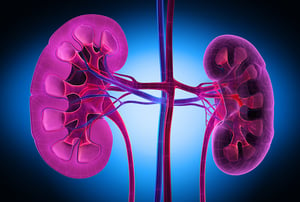Transplantation in ESRD Patients
(Gleaned from the 2018 USRDS Annual Data Report: Volume II: Chapter 6)
Kidney transplantation is the renal replacement therapy (RRP) of choice for the majority of patients with end-stage renal disease (ESRD). Successful kidney transplantation is associated with improved survival, improved quality of life, and healthcare cost savings  when compared to dialysis. In 2014, the Organ Procurement and Transplantation Network conducted major revisions of the kidney allocation system in order to reduce discards of potentially usable donor kidneys, decrease access disparities, and decrease unrealized life-years from the available organ supply. Changes included the following:
when compared to dialysis. In 2014, the Organ Procurement and Transplantation Network conducted major revisions of the kidney allocation system in order to reduce discards of potentially usable donor kidneys, decrease access disparities, and decrease unrealized life-years from the available organ supply. Changes included the following:
(1) A move to a continuous, percentile-based (lower is better) description of donor quality, the Kidney Donor Profile Index.
(2) For use in conjunction with the Kidney Donor Profile Index, the calculation of an Expected Post-Transplant Survival score for all adult kidney recipient candidates. The score is based on four factors: age, time on dialysis, prior transplant of any organ, and presence of diabetes. This allows preferential allocation of donor kidneys with the best KDPI scores of 20% or less, to younger and healthier candidates with the best EPTS scores of 20% or less.
(3) To more accurately reflect difficulty in donor-recipient matching, priority is given for sensitized candidates, based on their calculated panel reactive antibodies.
(4) The inclusion of pre-waiting list dialysis time in a candidate’s waiting time to partially dissipate the effects of late referral for transplantation. Now, waiting time includes time from the point of listing, with a requirement for a GFR ≤20 mL/min, or the time from initiation of dialysis (or return to dialysis if the patient had a failed kidney transplant).




